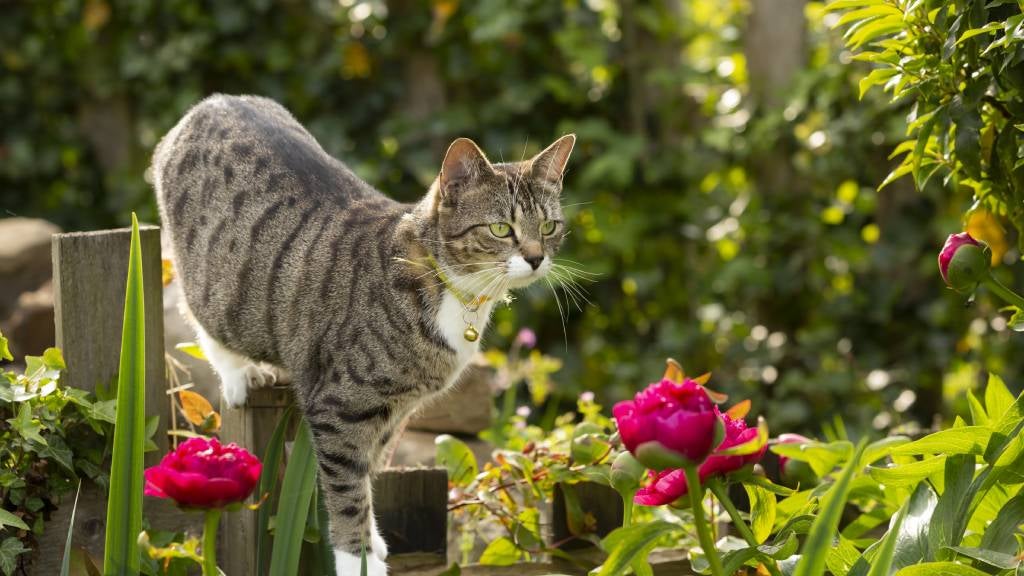Grow a pet-friendly garden

You love your pets, and you love your garden – but do the two mix well? Many cat and dog owners are surprised to discover that common garden plants, including flowers and veggies, can be toxic to their canine or feline friends. But the good news is, you can absolutely create a lush, beautiful outdoor space for your pets to enjoy safely.
This guide takes you through the best dog and cat-friendly plants, toxic plants to avoid, and other tips for creating a garden that's as welcoming for your four-legged friends as it is for you. Stick around for expert advice from Dr Rosalind Holland (BVSc, MVM, MANZCVS), who shares her tips on keeping pets safe while enjoying your green oasis.
Why a pet-friendly garden is important
Your garden should be a haven for all members of your household – including your pets. By designing a safe space, you’re allowing your pets to explore, relax, and bond with you in a setting that’s free from unwanted risks.
Whether it’s a dog chasing butterflies among the daisies or a cat basking in the sunlight, the right garden setup can add joy to your pets’ lives while enriching your own.
Pet-friendly plants to include in your garden
A pet-friendly garden is packed with fun textures, scents, and colours. Here’s how to build a thriving paradise for your dogs.
Flowers safe for dogs
Flowers are a gorgeous addition to any garden, but not all blooms are pet-friendly. Luckily, there are safe options abound. According to Dr. Holland, many popular flowers are perfect for dog-friendly gardens. Examples include:
- Marigolds
- Sunflowers
- Alyssum
- Hibiscus
Feeling unsure? You can look at the list of plants toxic to dogs on the Animal Welfare Victoria website. Dr. Holland recommends checking the American SPCA (ASPCA) database for lists of toxic and non-toxic plants tailored to pets, however be aware that this list does not include native New Zealand plants. If your pet ingests a toxic or New Zealand plant, refer to New Zealand’s National Poisons Centre’s animal helpline for advice to get them the help they need.
Dog-friendly vegetables and herbs
Dogs love to sniff, explore, and munch. A vegetable patch or herb garden can be a great sensory experience or a canine tummy-ache in the making. Safe options (in moderation) include:
- Pumpkin, squash, and courgette/zucchini
- Kumara vine and beets
- Herbs like dill, sage, rosemary, thyme, fennel, basil, and nasturtium
Native plants that are safe for dogs
When it comes to native plants, the list of non-toxic options is, unfortunately, unclear.
“There is limited information on safe native plants, although there are many well-documented toxic native plants. Although some native plants are likely to be safe, it is best to be cautious,” Dr. Holland advises.
Toxic natives include karaka berries, ongaonga (NZ tree nettle), ngaio, tītoki, and pōporo, which should absolutely stay out of reach. If you’re unsure, consult local resources or opt for alternatives.
Common toxic plants to avoid
Knowing what not to include is just as important as knowing safe options. These toxic plants are a definite no-no if you’ve got curious pets:
- Oleander
- Foxglove
- Lilies (especially toxic to cats)
- Sago palms
- Bulbs like tulips and daffodils
"Surprisingly, some vegetables can be a toxicity risk for pets. Nightshade family vegetables such as potatoes and tomatoes can present a risk, as can Allium family plants, which include onions, chives, and garlic," Dr. Holland notes. Don’t forget other risks like grapes, rhubarb, and macadamia nuts.
Understanding breed-specific allergies
Just like humans, dogs can have individual allergies or sensitivities to certain plants. If your dog has reactions to specific foods or grasses, consider consulting your vet before adding those plants to your garden. Breeds with sensitive skin, like Golden Retrievers, Labradors and West Highland White Terriers are especially prone to such issues.
Considerations for a cat-friendly garden
Cats are particularly sensitive to plant toxins because their diets don’t naturally include plant material. Lilies, for example, are highly dangerous for cats, as even a small lick of pollen can lead to severe toxicity.
Catnip (Nepeta cataria) is safe for cats and can be a good addition to a cat-friendly garden. Cats also love freshly dug-up soil (their favourite outdoor loo). Fencing off vegetable patches is a smart move to protect both your plants and your pet’s health. For extra safety, think about keeping your cats indoors by creating a catio on your balcony or deck or a safe and secure enclosure in your backyard, where your cat can sunbathe and explore safely without danger from plants, predators, or traffic. But be aware of the indoor plants that may also pose a risk to your pets.
Beware of other toxins in your garden
A pet-friendly garden doesn’t stop at plant selection. Regular maintenance ensures long-term safety:
- Avoid harmful chemicals: Pesticides, fertilisers, and slug bait can all be toxic to pets. Use pet-safe options where possible, and keep dangerous products locked away.
- Keep pets off sprayed areas: If you’ve had to use sprays, prevent pets from walking on treated areas until the product has dried or settled.
- Compost caution: Compost bins can contain mould or toxins harmful to animals or even food scraps of toxic table foods. Always keep bins secure.
- Fence dangerous zones: If an area of your garden poses risks – for example, a vegetable patch with toxic plants like tomatoes or onions – consider fencing it off.
Testing your garden regularly for unforeseen hazards will go a long way in keeping your peace of mind.
Grow a thriving oasis for your pets
A pet-friendly garden is more than just a backyard; it’s a sanctuary where you and your pets can relax, play, and enjoy the beauty of nature together. By picking the right plants, ditching the dangerous ones, and maintaining your garden with care, you’re creating a safe and enriching environment for your pets.
Keep your pets protected by considering having the right pet insurance in place. SPCA Pet Insurance offers three levels of cover to ensure your furry friend is well taken care of.
9 May 2025
